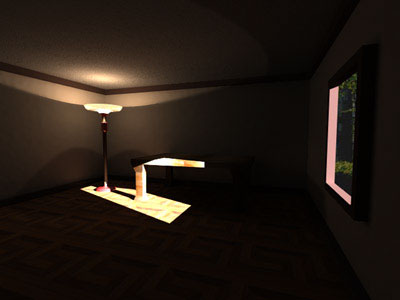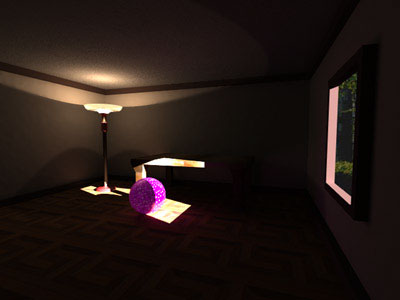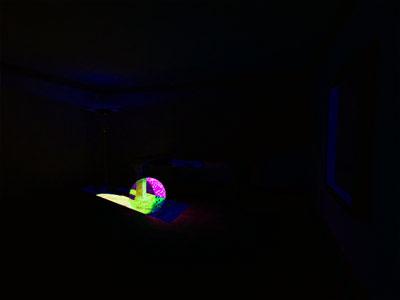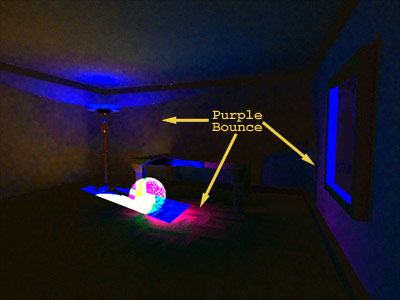
Original Rendered Image
So far we've been looking at photographs. There is another class of images, however, that Diff can be useful in analyzing. Synthetic or rendered images are unique, in that you have incremental control of all the elements of the final composition.
The image on the right is a simple radiosity-rendered image. There are two light sources, the lamp and a beam of light coming in through the window.
Radiosity renders are unique in that they take into account the illuminating properties of bounced light. In this example, the floor is slightly lit by the bounced light of the lamp off the ceiling, and the back wall is slightly lit by reflected "sunlight."
Now lets add an element to the scene, and use difference to see how the new element impacts the environment.
The new element in this case is a purple toy ball.

Same scene, with added ball.

The raw difference image.

Level adjusted diff, annotated.
The most obvious change is the ball and it's shadow. Almost as obvious are the swaths of purple light that bounce off the ball and illuminate the surrounding area.
More subtlety, you can see that by simple placing an additional object in the room, almost the entire radiosity solution has changed, as we can see that there are differences in the image that encompass nearly the entire room.
Conclusion
I hope you've enjoyed this little detour into the world of Photoshop's Difference layer. There is much to be gained from harnessing the ability to differentiate changes in images.
Note: If you crave even more interesting Diff tips, you might want to head over to Grafica Obscura for this interesting trick.